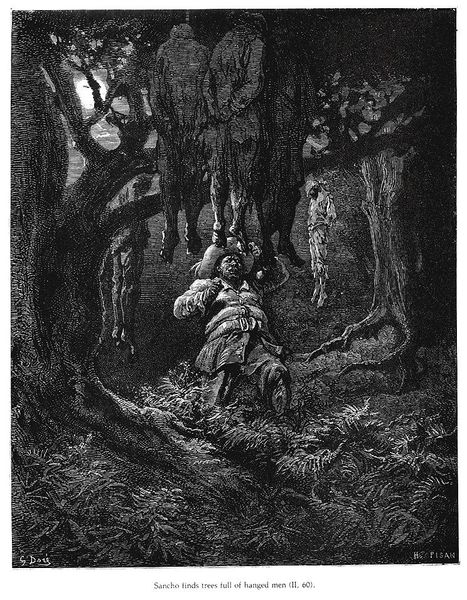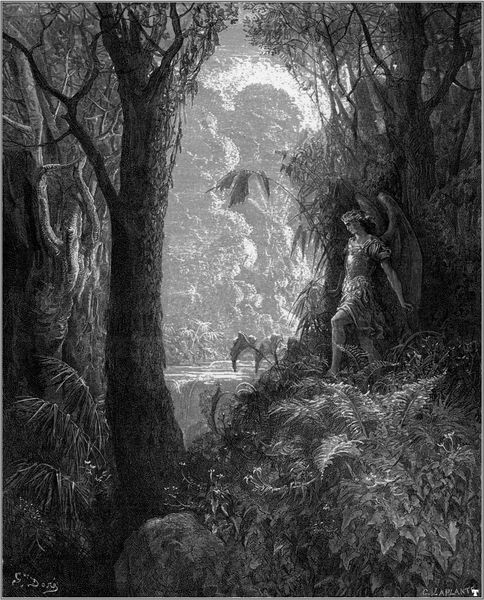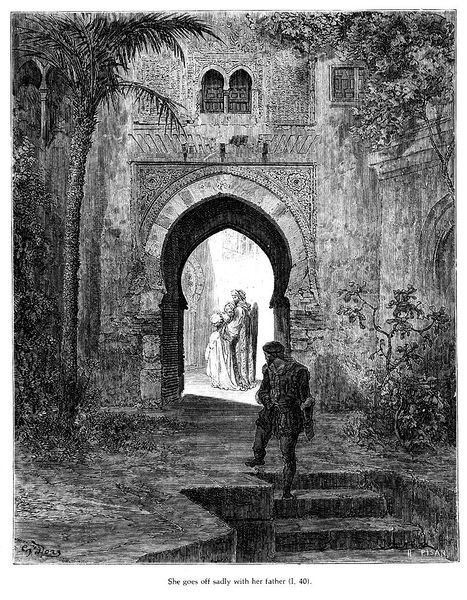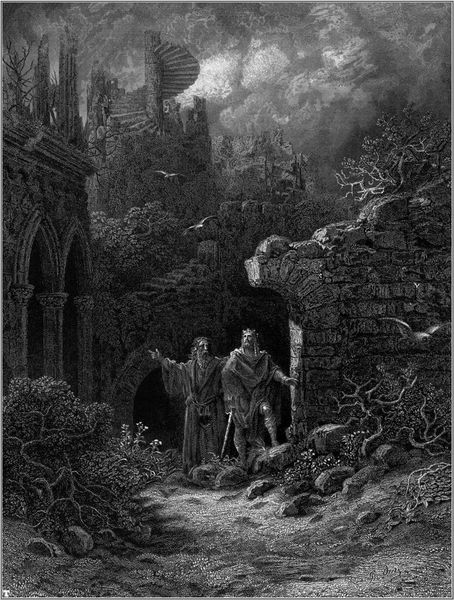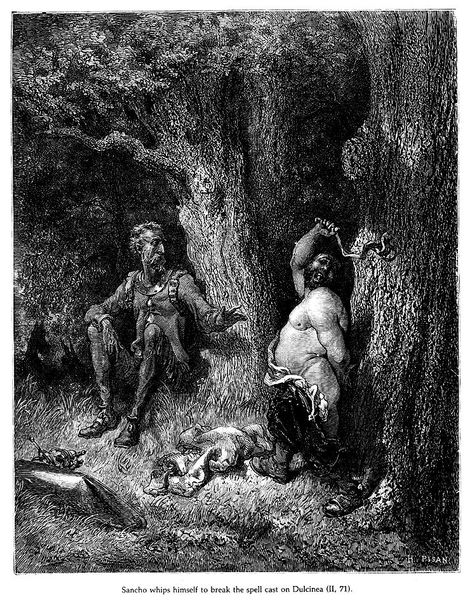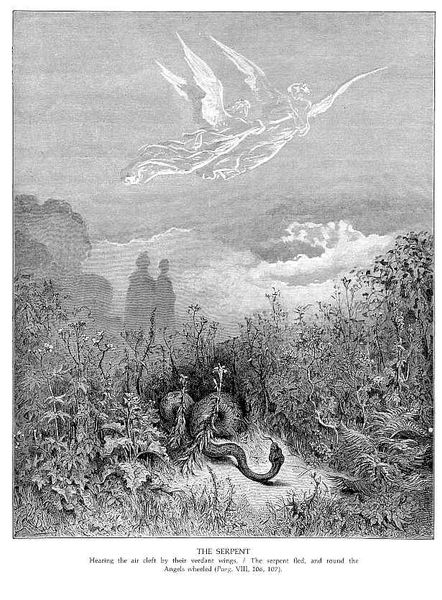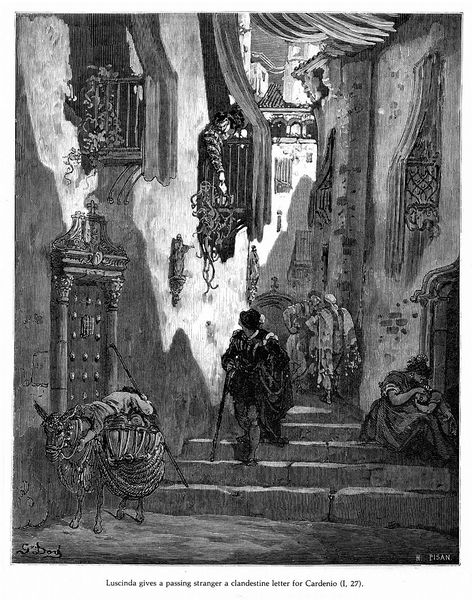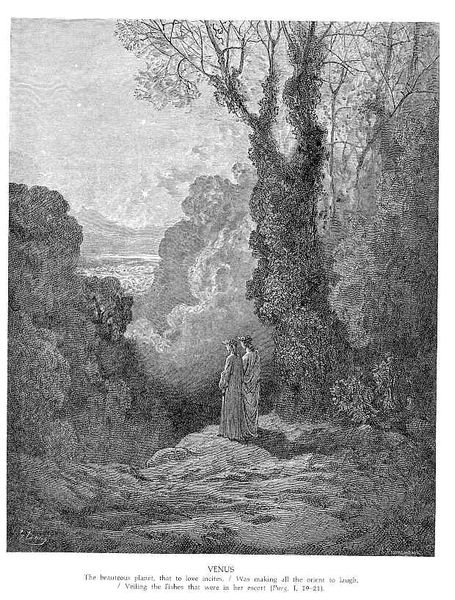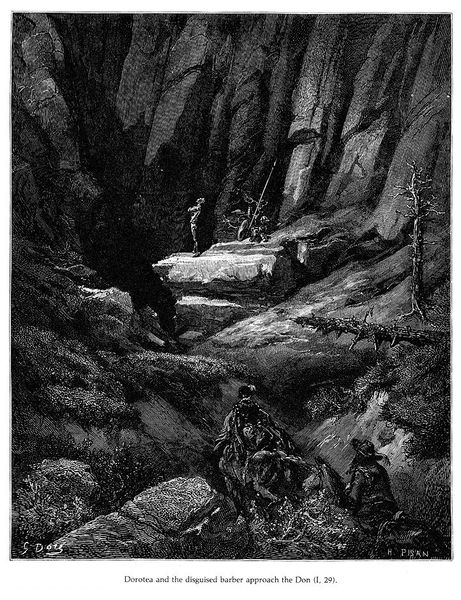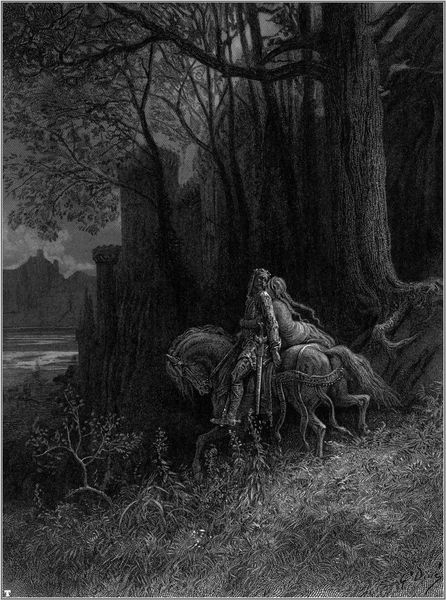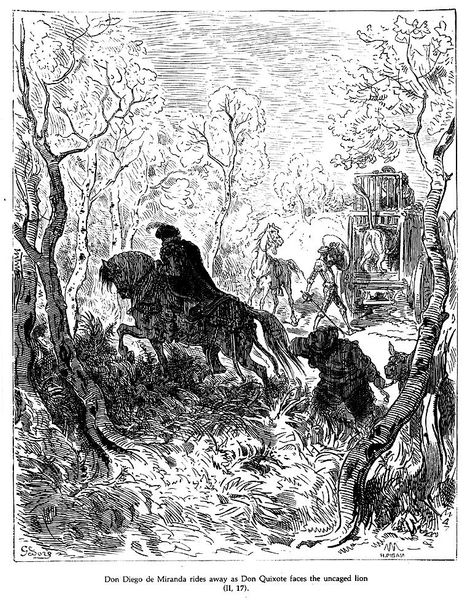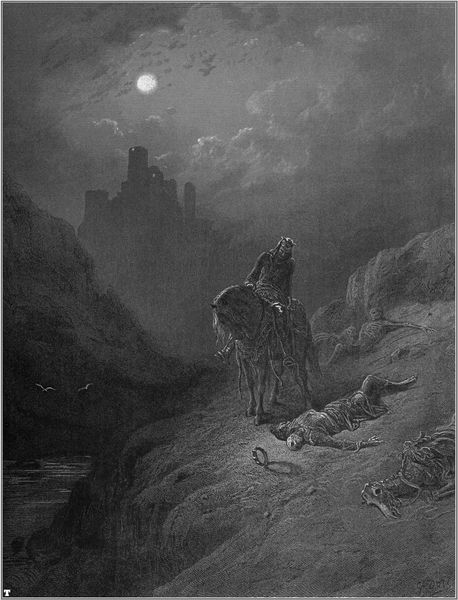
Copyright: Public domain
Gustave Dore's engraving, "Blondel Hears the Voice of Richard the Lionheart," captures a moment of loyalty and longing. Created in the 19th century, it reflects a romanticized vision of medieval history. In the image, Blondel, disguised as a minstrel, strums his instrument near a castle, his face tilted in anticipation. Richard the Lionheart, imprisoned within, responds to the familiar melody they composed together. The image speaks to the powerful bonds of brotherhood and the role of music as a means of resistance and connection. Dore, working in a time of political upheaval and social change in France, may have been drawn to the story of Richard as a way to explore themes of injustice and resilience. There's a quiet tension in the image: the hope of recognition set against the stark reality of captivity. Ultimately, the artwork serves as a potent reminder of the human spirit's ability to endure and seek connection, even in the face of oppression.
Comments
No comments
Be the first to comment and join the conversation on the ultimate creative platform.
